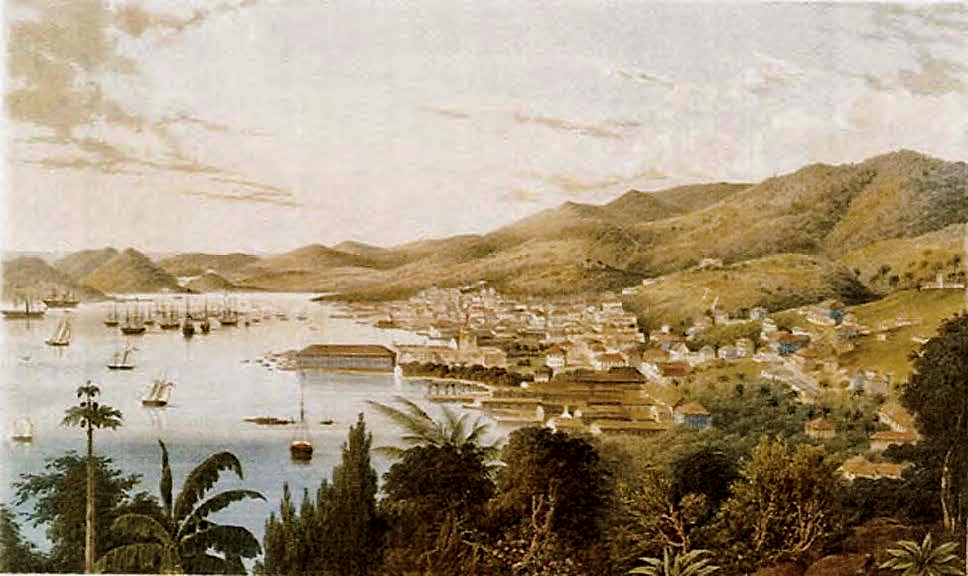
Charlotte Amalie harbor, now one of the most popular tourist stops in the Caribbean, was once considered too unhealthy for a stopover in the 19th century, according to researcher Elizabeth Rezende, who presented her dissertation, “The Rise of the Harbor and the Increase in Migration to St. Thomas, Danish West Indies 1880-1901,” to the Caribbean Genealogy Library on Saturday afternoon.
Rezende has dedicated 40 years to studying various groups of people who journeyed to the West Indies. Her original presentation, first given in 2014, was primarily anecdotal and used old diaries and travelogues for content, but Rezende said her “much-revised work” has shifted to using historical records.
St. Thomas Harbor was the focus of Rezende’s presentation on Saturday. She provided several photographs and depicted the workings of the harbor where transatlantic steamships stopped while voyaging through the Caribbean, South America and Central America. Rezende notes that from photographs it can be witnessed that “around 1861 steam was starting to come into vogue for transatlantic voyages.”
“The harbor was deemed congested, it was deemed unsafe, health-wise, because typhoid and cholera, the harbor just fostered those diseases. Therefore, the isthmus was cut in 1867,” so boats could easily turn around and did not have to disembark unless so desired, Rezende said.
To better imagine how the bustling harbor would have seemed, Rezende read an anecdote from Charles Kingsley, who in 1871 wrote about his steamer as it glided into the St. Thomas Harbor.
“The engine hardly stopped, when we were boarded … and huge bunches of plantains, yams, green oranges, chunks of sugar cane were displayed on deck,” reads Kingsley’s description.
Rezende said vendors would row out to the steamers and board the ships in hopes of selling their products, which included many varieties of fruits and vegetables that were entirely new to incoming passengers.
There were also ferry boats that would usher individuals from the steamers to the shore.
By 1917 motorized rowboats would have been used for ushering, Rezende said. The rowboat operators made 20 cents an hour, Rezende said.
On the shore, 19th-century visitors would have found storage facilities with “different flags of different nations that symbolized Italian, French or Danish merchants. They would put their flags above their storage warehouses as a matter of national pride,” Rezende said.
Men were hired as porters and cargo men by the four steamship companies to facilitate the unloading of goods and loading of mail and goods. But Rezende said it was women, dressed in white, who would fill baskets with coal to offload the barges and then deposit the coal on Hassel Island.
“With empty baskets, they come into these pits, these open-air barges that are filled with coal and they scoop up baskets full of coal and after they have their baskets filled, they go back out to Hassel Island and throw the coal on the heaps. This was the first part of their jobs as coal carriers,” Rezende said.
They brought in the coal that was delivered to Hassel Island and placed it in the heaps located on Hassel Island “and they were paid one penny a basket,” Rezende said.
When boats were finished with their time in port, Rezende said, the vessels would go to Hassel Island for refueling, where women with 90-pound baskets of coal would run up a set of steeply inclined plates to enter the hull of the vessel to deposit the coal.
The harbor was also a great source of work for the men of the West Indies who could work their way up to being crew on the ships.
“When opportunity such as working on the large steamships arose, those men – willing and able – pursued what must have been a great adventure and a chance to earn higher wages,” Rezende said.
“St. Thomas definitely was the crossroads of shipping,” Rezende said. By 1871, St. Thomas’ best years as a shipping port had already occurred. From 1871 to 1880 the port began to decline. From 1880 to 1890 there were fewer than 1,000 ships at the port, a third of what could be found before 1871, Rezende said. By the 1900s you would find around 500 ships in the harbor.
More about the history of the St. Thomas Harbor is online at the Caribbean Genealogy Library website. The library is temporarily closed due to the COVID-19 pandemic.





